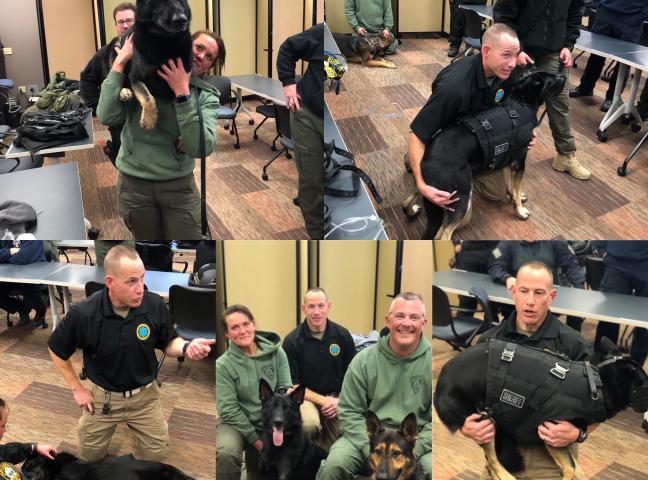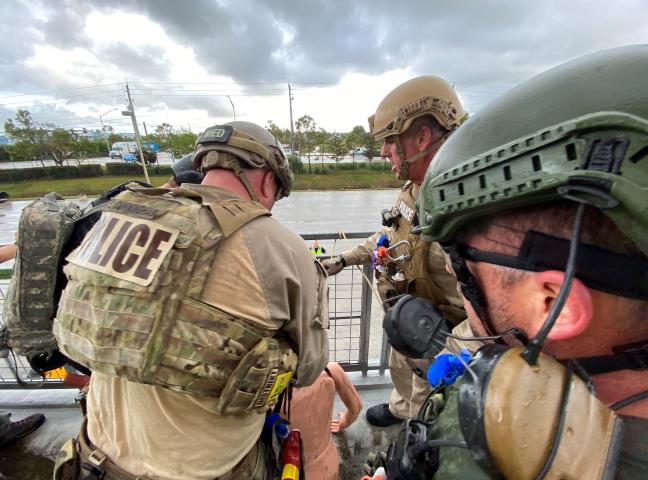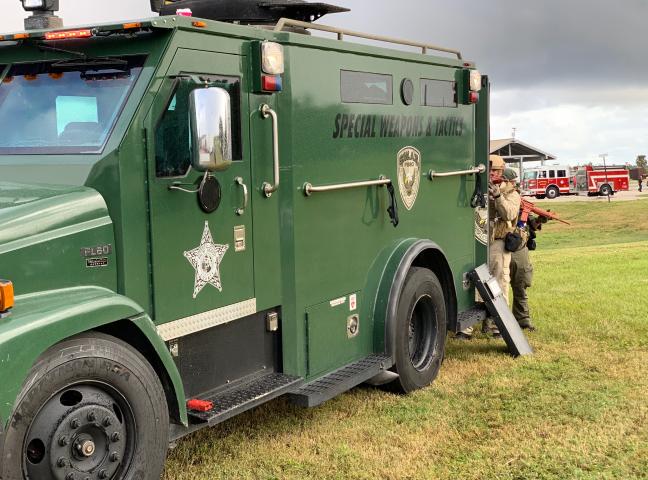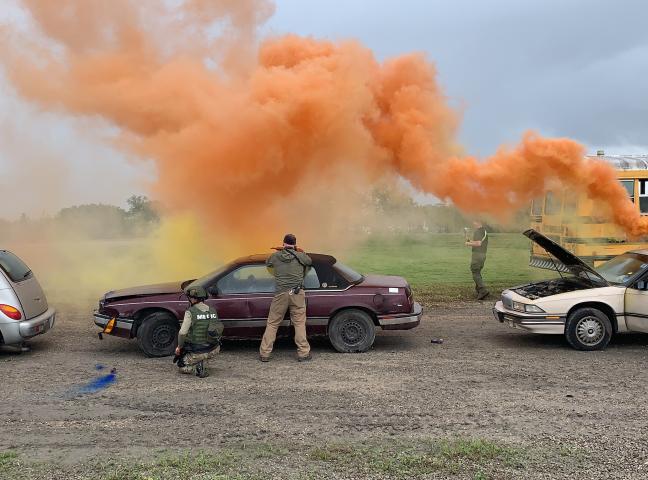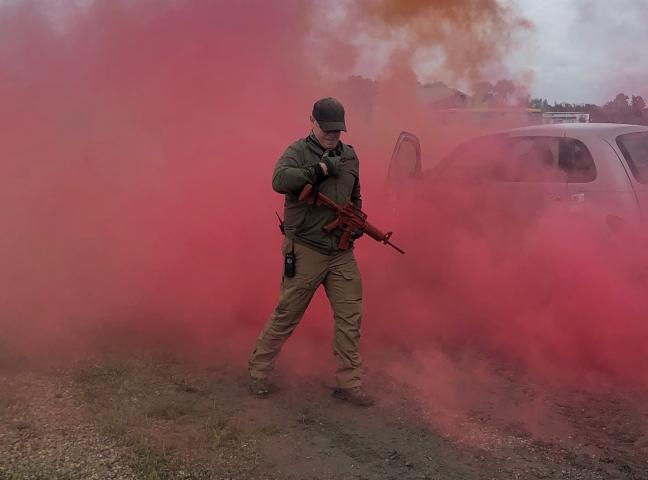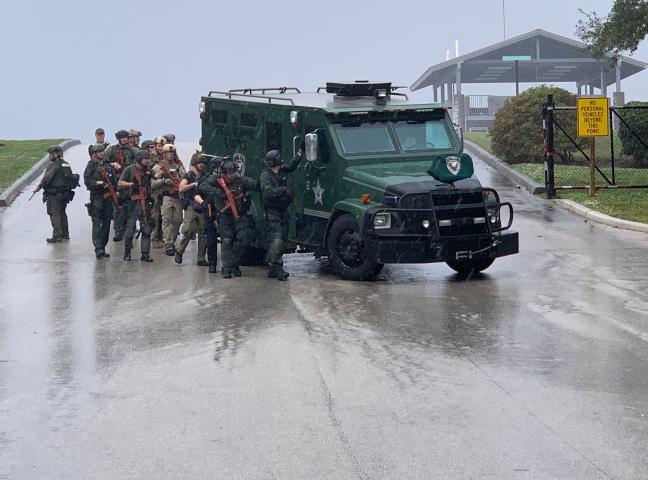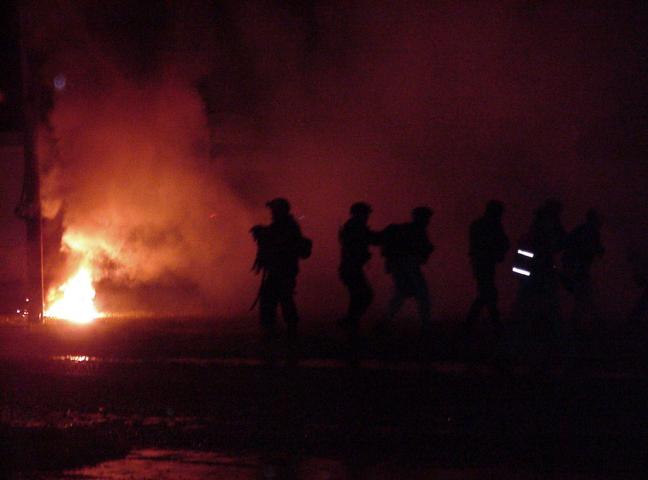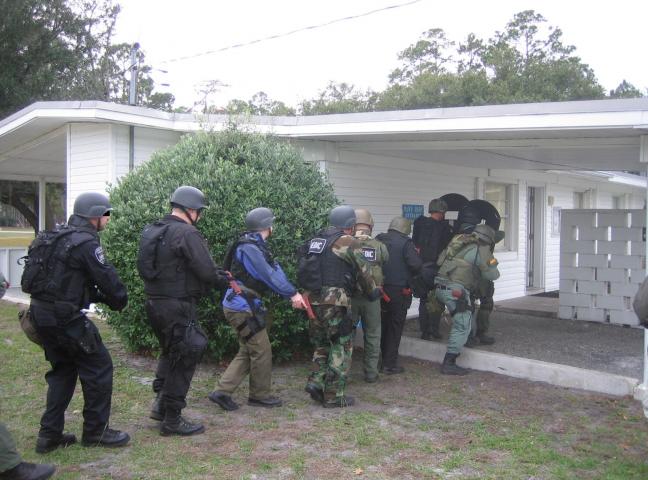COUNTER NARCOTICS AND TERRORISM OPERATIONAL MEDICAL SUPPORT
After an initial pilot program in 1989, the Counter Narcotics and Terrorism Operational Medical Support (CONTOMS) Program was started in 1990 to meet the need for specialized medical training to support law enforcement special operations. EMT-Tactical (EMT-T), the cornerstone of the program, is a one-week, 56-hour continuing education module for medical personnel supporting special response teams.
Law enforcement remains a dangerous occupation. A total of 1559 law enforcement officers died in the line of duty during the past 10 years, an average of one death every 56 hours or 156 per year. There were 127 law enforcement officers killed in 2012. On average, more than 58,000 law enforcement officers are assaulted each year, resulting in over 17,000 injuries. Our own data suggests that SWAT Team members are at high risk for injury, sustaining a casualty rate as high as 9 per 1000 officer-missions.
Law enforcement and the military services have long recognized that medical support of special operations can enhance the probability of mission success. This type of support requires a unique, additional expertise, which is complementary to the basic qualifications of prehospital health care providers. Community emergency medical services (EMS) systems in the United States and abroad were developed to respond to the needs of individual patients in controlled situations. However, in some locales, emergency medical technicians trained for the EMS role have been pressed into service to support counter terrorism, drug interdiction and other law enforcement activities without any additional training. These activities have become increasingly specialized in nature, characterized by prolonged operations, organized opposing forces, use of military-type weapons, and increasing death and injury among law enforcement officers, perpetrators and innocent citizens.
The goals of the CONTOMS Program are to offer a nationally standardized curriculum, certification process and quality improvement procedure to meet the needs of those EMTs, paramedics, and physicians who operate as part of a law enforcement team. Additionally, the program tracks data to assure that the educational efforts is evidence-based, so that it meets the dynamic needs of the law enforcement and EMS communities. Finally, the program faculty is available for consultation to Federal, state and local agencies to help meet immediate requirements, solve urgent problems or conduct needs assessments.
